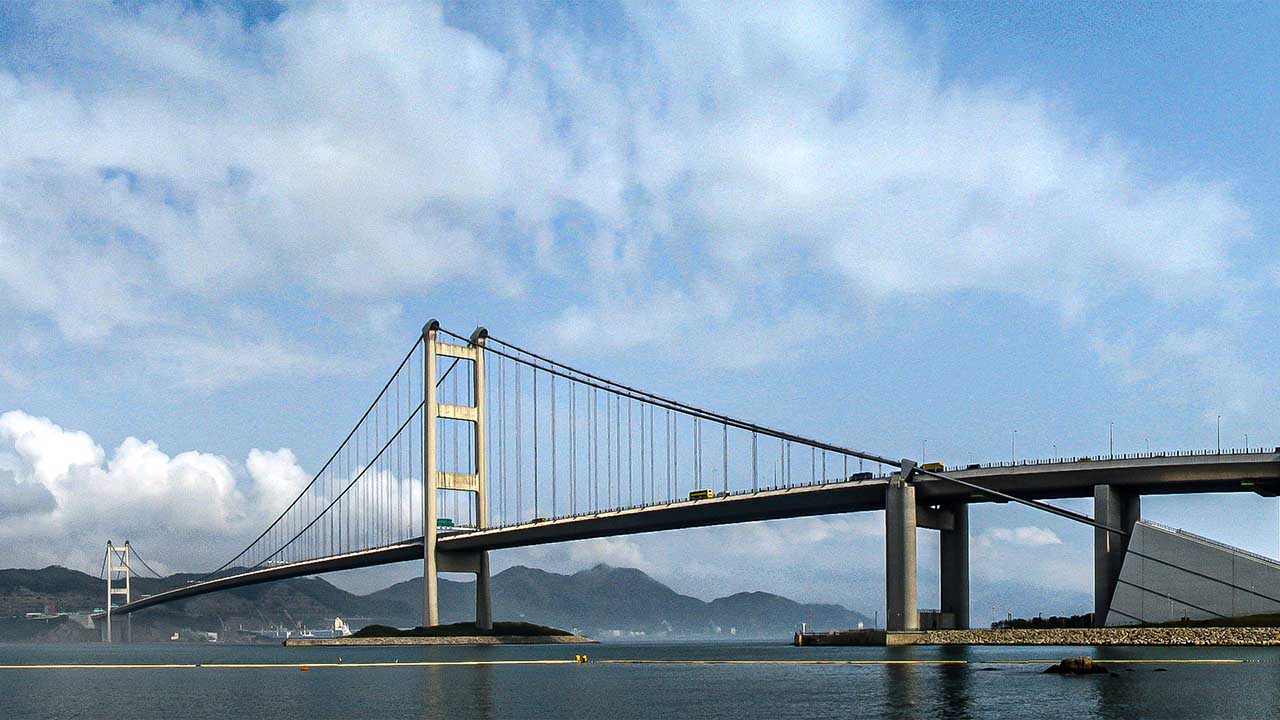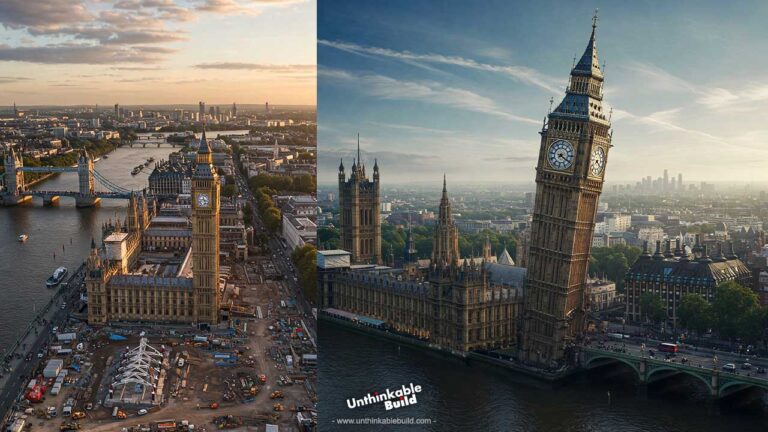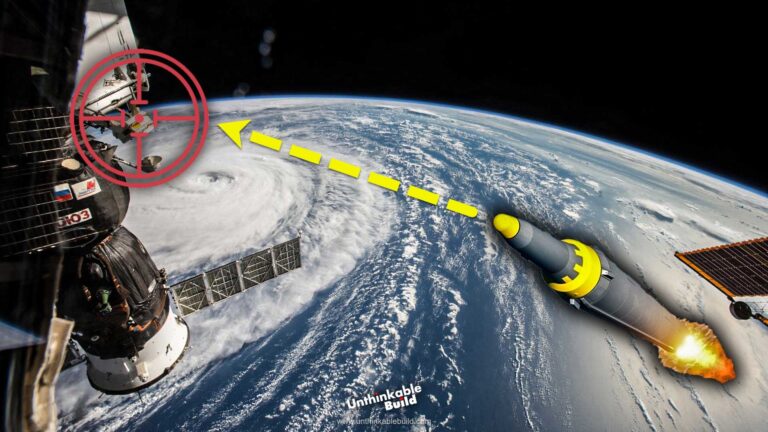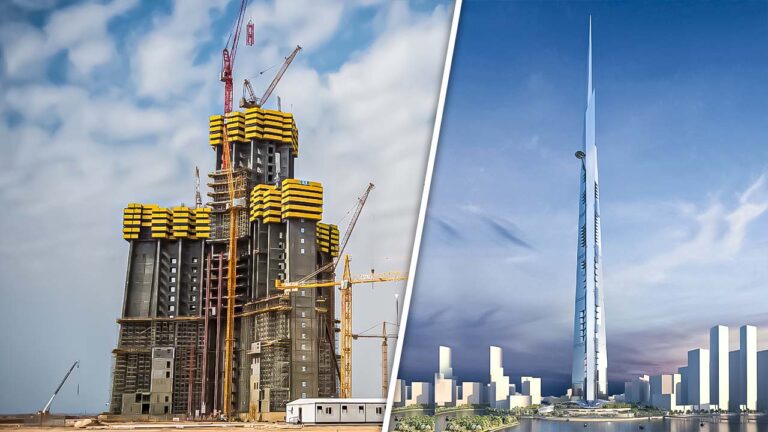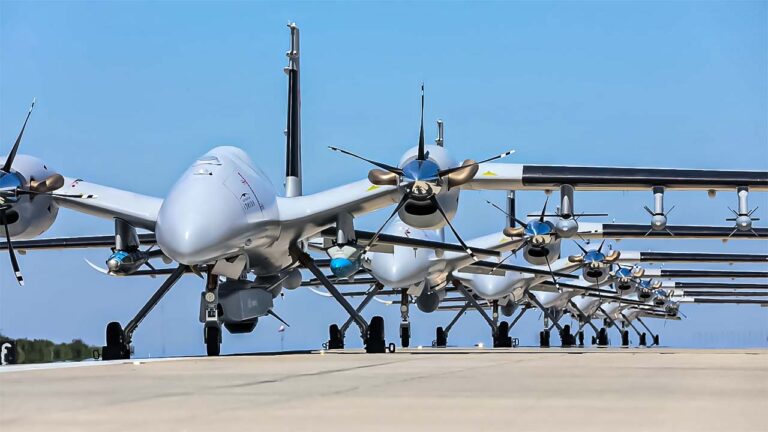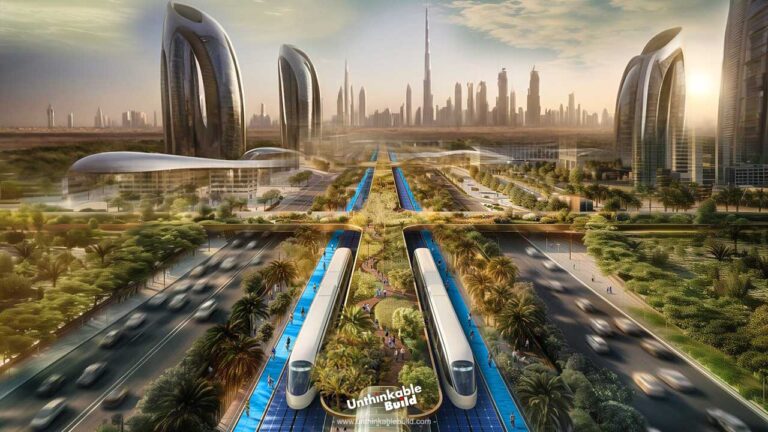Tsing Ma Bridge: The $1.35 Billion Bridge that Connects Two Major Islands
Embedded within the dynamic landscape of China, Hong Kong emerges as a city of contrasts, a special administrative region pulsating with life. In its compact 1,104 square kilometer expanse, a mosaic of 7.4 million souls, hailing from diverse corners of the globe, converges to create a kaleidoscope of cultures and experiences. It stands as a testament to urban density, weaving a rich array of humanity that thrives amidst the hustle and bustle.
Its genesis lies in the echoes of history, born as a British colony following the turbulent aftermath of the First Opium War in 1841–1842, when the Qing dynasty relinquished control of Hong Kong Island.
From humble beginnings as farming and fishing hamlets, Hong Kong burgeoned into a global powerhouse, a beacon of financial prowess and commercial might. Today, its skyline, adorned with towering skyscrapers, whispers tales of economic ascendancy that reverberate across continents. Ranked fourth in the world for financial prowess, it stands as a titan in exports and imports, wielding influence that transcends borders. Amidst its streets, a cosmopolitan air permeates, attracting a cadre of billionaires and ultra high-net-worth individuals, crafting a narrative of opulence and ambition.
Amidst this urban sprawl lie 263 islands, each with its own story to tell. Yet, it is within the embrace of 19 of these isles that the heartbeat of Hong Kong resides. From the grandeur of Lantau to the modest charms of Ma Wan, each island adds its own hue to the vibrant palette of this dynamic metropolis, enriching its landscape with diversity and vitality.
As Hong Kong’s largest island, Lantau Island has encountered challenges in connectivity. Its existing transportation infrastructure struggled to cope with the rising traffic between Lantau and surrounding areas, hindering economic growth, tourism, and residents’ access to other regions. To address these issues, a decision was made to construct a 1.37 km long and one of world’s most expensive bridges, aiming to link Lantau with neighboring islands and alleviate its isolation.
The Tsing Ma Bridge, a critical infrastructure in Hong Kong, serves as a vital link connecting Tsing Yi and Ma Wan islands. Its construction was motivated by several factors.
Also Read: Hyper Kamiokande: Japan is building Something Huge Inside a Mountain
Primarily, it serves as a vital transportation artery, seamlessly connecting Tsing Yi Island and Ma Wan Island. Prior to its construction, the reliance on waterways for inter-island travel restricted connectivity and impeded developmental prospects.
Tsing Yi Island, nestled within the embrace of Victoria Harbour in Hong Kong, stands as a testament to modern urban development. This island has evolved into a bustling urban center adorned with residential complexes, commercial hubs, and industrial zones.
Functioning as a pivotal transportation hub, the island’s strategic location near the airport and its connection to the Tsing Ma Bridge facilitate seamless connectivity across the region.
On the other hand, Ma Wan Island, though relatively small in size, exudes a distinct charm as a burgeoning residential community. Renowned for its residential developments, notably the Park Island apartment complex, Ma Wan beckons seekers of modern living amidst tranquil surroundings.
The Tsing Ma Bridge, a marvel of engineering prowess, embarked on its construction journey in May 1992 and reached completion in May 1997, leaving an indelible mark on Hong Kong’s infrastructure landscape. This monumental project was a pivotal element of the Lantau Link initiative, designed to bridge the gap between Lantau Island, the largest in Hong Kong, and its urbanized counterparts.
Amidst the construction fervor, numerous consortia vied for the coveted contract. Hyundai, lured by the allure of cost efficiency, ventured forth with the lowest bid, only to be disqualified for failing to meet financial regulations. Meanwhile, a Japanese bid, laden with grandeur but burdened by excessive cost, gracefully bowed out, paving the way for an unexpected alliance.
Thus, the Anglo Japanese Construction Joint Venture emerged triumphant, a fusion of minds from Costain, Mitsui, and Trafalgar House.
The architectural blueprint of the bridge was crafted by Mott MacDonald, a renowned firm in the field. Initially conceptualized in 1982, their design featured a two-lane dual carriageway atop the structure, complemented by a light railway on the lower deck.
However, as plans evolved, the bridge underwent a redesign process starting in 1989. This adaptation was necessary to accommodate the upgraded specifications, including a three-lane dual highway and the integration of a heavier airport railway. Drawing inspiration from iconic structures like the Forth Bridge in Scotland and the Severn Bridge in England, the designers imbued the project with a blend of functionality and aesthetic appeal.
In May 1992, the symphony of construction commenced, orchestrated by Gammon Construction, tasked with crafting the monumental caissons for the bridge towers. Each caisson, a behemoth of steel and concrete, was delicately floated into place, submerged, and then filled with concrete underwater, illustrating the intricate process of construction.
On the serene shores of Ma Wan, where progress whispered tales of transformation, the colossal caissons stood as silent sentinels, weighing a staggering 4,500 tons each. Closer to the comforting embrace of Tsing Yi’s shore, their counterparts bore a slightly lighter burden, tipping the scales at approximately 3,000 tons. Meanwhile, land reclamation efforts reshaped the landscape at both ends of the bridge, with Ma Wan’s substantial reclamation serving as a bustling work platform for construction crews.
In the waning months of 1994, a milestone was reached as the first steel deck segment ascended to claim its rightful place in the sky. Approach deck segments, crafted in Britain and Dubai, embarked on a transcontinental journey before converging in Hong Kong for assembly. The main span segments, born from the skilled hands of artisans at the Cleveland Bridge & Engineering Company and Mitsui, became the backbone of the bridge’s essence.
A serendipitous twist graced the construction site as familiar climbing cranes, once instrumental in shaping the iconic HSBC Main Building and Canary Wharf, returned to coordinate the movements of steel and concrete once more. In their synchronized motion, they breathed life into the tower portals, imbuing them with the majesty and grace that would define the bridge for generations to come.
Noteworthy for its engineering marvels, the Tsing Ma Bridge holds several distinctions. It ranks as the world’s 16th-longest span suspension bridge and was the second longest of its kind at the time of completion.
This double-decked suspension bridge spanning the Ma Wan Channel, serves as the vital link between Tsing Yi and Ma Wan Islands. Its architectural magnificence is underscored by remarkable specifications, including a main span stretching an impressive 1,377 meters, making it the longest rail-carrying span globally. Towering at a height of 206 meters, it boasts a 41-meter-wide road deck accommodating six lanes of automobile traffic, alongside a lower-level housing two rail tracks and sheltered carriageways for maintenance access during severe weather conditions.
Also Read: How AI is Reshaping Air Traffic Control Towers
The investment in the Tsing Ma Bridge, totaling $1.35 billion, reflects its pivotal role as both a critical transportation conduit and a beacon of engineering excellence. Its inauguration on April 27, 1997, by former British Prime Minister Margaret Thatcher marked a momentous occasion in Hong Kong’s history, followed by its official opening to traffic on May 22, 1997.
As part of the Lantau Link project, the Tsing Ma Bridge became integral to connecting Lantau Island, Hong Kong’s largest island, with the urbanized areas of the territory. Before its completion in 1997, Lantau Island could only be accessed by water, keeping it predominantly rural.
Tsing Ma bridge played a crucial role in the Airport Core Program, facilitating access to Lantau Island during the development of Chek Lap Kok Airport. This modern airport replaced the congested Kai Tak Airport in Kowloon, enhancing air travel efficiency in the region.
The Tsing Ma Bridge has evolved into not only a landmark but also a scenic attraction. Situated at the northwest corner of Tsing Yi Island, near the bridge’s Tsing Yi end, is the Lantau Link Visitor Centre and Viewing Platform. Visitors can enjoy panoramic views of not only the Tsing Ma Bridge but also the Ting Kau Bridge and Kap Shui Mun Bridge. The bridge is visible from the Airport Core Programme Exhibition Centre, located approximately 2 kilometers north of the bridge.
The Tsing Ma Bridge transcends its physical existence to symbolize Hong Kong’s progress, modernization, and unwavering commitment to infrastructure development. It stands as an iconic landmark, a testament to the city’s resilience and capacity to surmount geographical challenges, embodying the dynamic spirit and aspirations of Hong Kong.
The Tsing Ma Bridge encapsulates the essence of connectivity, innovation, and the relentless pursuit of advancement in the dynamic fabric of Hong Kong’s identity.

